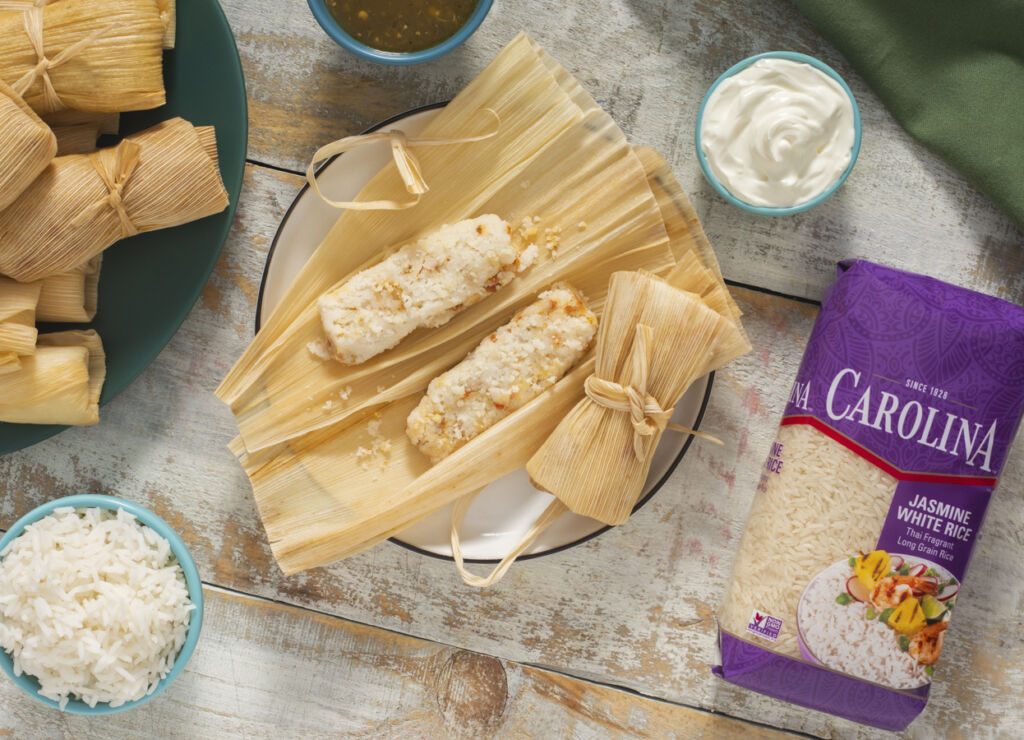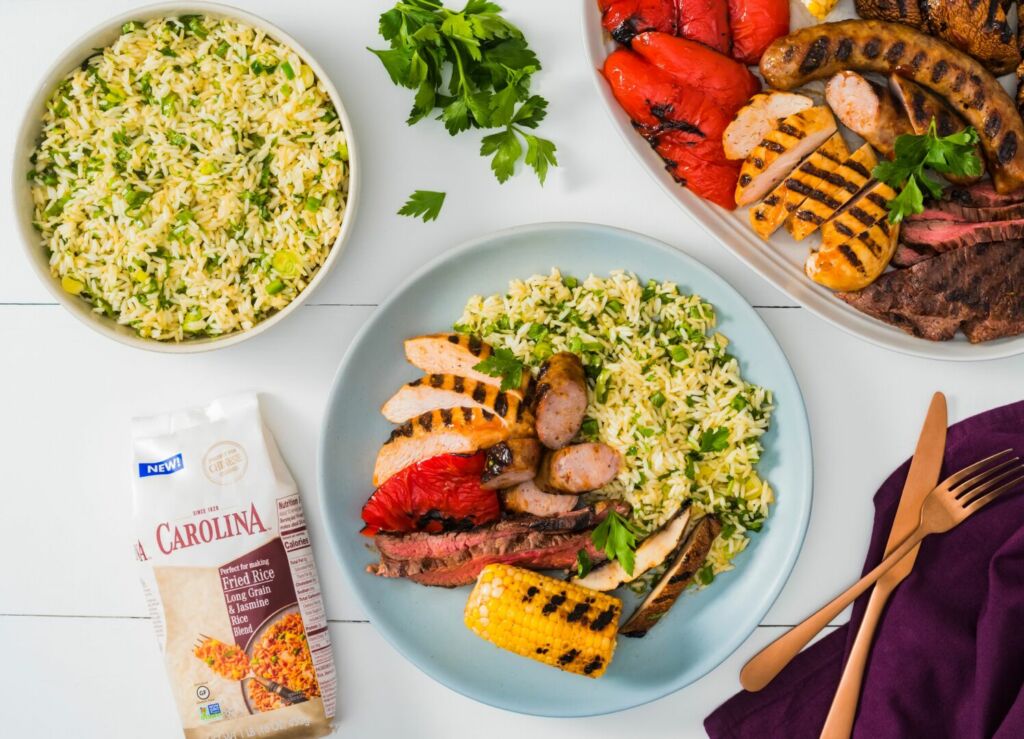Do you know the difference between roasting and baking, or grilling and barbecuing? Whether you know or not, you’re in the right place! After all, even professional chefs need to brush up on their skills now and again.
In fact, using one cooking technique or another can change the taste and texture of your ingredients as well as the overall meal. So, if you’re an experienced home cook or just starting out, we’ll guide you through some basic cooking techniques that everyone should know and provide a few recipe ideas to get started.
Follow along as we guide you from the oven, to the stove top, kitchen gadgets and finally to the great outdoors! Feel free to jump around and learn as you choose, and most importantly, save this guide to keep coming back to later. Let’s get started.
In the Oven
These cooking techniques use a convection or conventional oven. If you’re not sure about the difference, a convection oven uses fans to circulate the heat around the food for more even cooking. Conventional ovens heat from the top and bottom only. The way the air circulates changes the oven temperature, so that’s why you might notice that instructions often have different temperatures for either.
Roast vs. Bake
Roasting and baking are two of the most common oven cooking techniques that are often used interchangeably, however, there are a couple of things that set these two apart. Roasting generally refers to cooking already solid ingredients (chicken, meats, vegetables, etc,) at higher temperatures using dry heat so that it cooks evenly. Baking, on the other hand, refers to foods that do not have a solid structure such as casseroles and liquid batter cakes or muffins that are cooked with a lower and slower heat.
Notice how the vegetables in this Roasted Cauliflower Bowl develop a golden brown crisp outer texture at a higher temperature while these Savory Rice Muffins bake until they form a solid.

Broil
Another useful oven technique to learn is broiling, similar to grilling, this helps food to develop a charred and caramelized touch but is cooked inside any time of year. This is achieved by placing food at a high temperature under direct and intense heat coming from the oven broiler, at the top.
Perfect for hamburgers, meat and vegetables, this also works to give casseroles or baked goods, like this Spicy Green Chili Rice Dish with cheese, that extra bubbly and melted finish during the last few minutes.
Over the Stove
Most everyone can boil water, however these other must-know techniques over the stove might sound complicated but are actually quite easy to master once you know the difference. For a delicious dessert over the stove, we recommend an indulgent rice pudding!
Sauté vs. Stir fry
While both require a pan over the stove, there are certain differences worth noting to get the very best flavor and texture out of your ingredients! Sautéeing refers to cooking small pieces of food over medium-high heat, in a wide pan, until browned on the outside and cooked through. Generally, it uses a lesser amount of cooking fat such as butter, oil or a combination. Sautéeing ingredients like vegetables or spices often creates an amazing base for other dishes like sofritos for Spanish paella or flavor for soups like this Shrimp Soup with Jasmine Rice.
Stir frying is a lot more active, requiring constant motion. Food is cooked over high heat, which calls for oil as it has a higher smoke point than butter. The action is faster when you stir fry foods, and the ideal pan is a wok so that every ingredient is heated evenly. Anything from fried rice to sliced vegetables can be stir fried like in this Mexican Beef Stir Fry with fajita like strips of bell peppers and onion.
Poach
Similar to boiling, this method is used for more delicate ingredients like fish or eggs. It calls for simmering food in hot liquid, mostly water.
Follow our step by step recipe to make your own poached eggs to layer on top of this Baked Feta Rice dish. To keep the egg white together, we recommend adding a little vinegar to the cooking water – don’t worry, the flavor won’t transfer to your egg!
Sear
Commonly meat is seared over high heat in order to obtain a crisp, browned outer texture and tender interior. It is often considered caramelization for meat, fish, poultry or more. After food has been seared it is often cooked over lower heat in the oven or served as is for specialty meals like tataki. Try making your own with sushi-grade tuna in these Crispy Rice Canapés with Seared Tuna.
Fun Fact: In Cajun cuisine, blackening is a technique similar to searing in order to obtain a crispy brown or “black” outer texture. Try it for yourself in this recipe for Cajun Blackened Fish Lettuce Wraps with Rice.
Steam
Did you know you can steam much more than vegetables? This cooking method uses steam or water vapor to cook food, as the result of boiling water. A steamer is used to help keep food separate from the water, which is essential when making your own Homemade Tamales!

Chef note: If you don’t have a steamer on hand, use a traditional pot, strainer and lid. Fill the bottom with water and place a strainer with your tamales, vegetables or anything else above it. The most important aspect is that your food does not touch the water, but rather gets steam when it cooks! Cover with a lid and let your food steam.
Blanch and Shock
If you’re unfamiliar with these terms, blanching and shocking refer to cooking foods like vegetables or fruits in scalding, boiling water for a short period of time and quickly placing it in ice water to stop the cooking process immediately.
This technique is quite useful when freezing vegetables and fruits or preserving them for later. It also helps to offer a slightly cooked texture while maintaining the flavor of crunchy foods like broccoli or cauliflower in this Mediterranean Rice Bowl.
Deep Fry
Most anything can be deep fried! And, while you might associate it with Local Street Fair Food, you can also deep fry foods at home.
To try this at home, you’ll need to submerge food in extremely hot oil or other fats for a crispy golden brown finish. As the food is covered by oil, the surface is cooked evenly. Due to the high heat, you’ll need a cooking oil with a high smoke point like canola or vegetable oil. Use a shallow sauce pan, and have a slotted spoon and strainer lined with paper towels on hand.
Try any one of these fun recipes at home:
- Homemade Basmati Crab Cakes with a yummy curried mango dipping sauce.
- Fried Mushroom and Thyme Risotto Balls with marinara sauce.
- Sweet Dessert Arancini with a caramel or chocolate center!
Frying Tips: For best results, use a food thermometer to measure the temperature indicated in the recipe. If your oil is heating the food too quickly, simply lower the heat. To avoid any oil splashing back, lower your ingredients into the oil with the slotted spoon, carefully, and always in small batches.
Stews vs Soups
While stewing is a cooking method which results in a warm and hearty stew, can a soup also be stewed? We’d like to take a minute to highlight some of the main differences.
Stewing is technically simmering food for a longer period of time in liquid which results in a final stew. So, technically no, a soup can’t be stewed. Soups have a bit more liquid which covers the ingredients almost fully while stews have just enough liquid for the ingredients to cook but may not result in very much liquid at the end.

Stews like this Latin American Beef Birria with Tomato Rice are wonderful to scoop up with a spoon or can be used for a taco or burrito filling on account of the lesser amount of liquid.
Kitchen Tools
With so many multi-cookers on the market, let’s take a look at a couple to see exactly what they can do!
Air Fryer
These convenient gadgets make for easier frying! As its name suggests, it uses hot air to obtain that crispy crust you would expect when you deep fry food, but there is no need for loads of oil. Use it to make your own crispy Baja Fish Taco and Rice Bowl or you can even use it to cook liquid batter such as donuts, cookies or rice fritters in molds.
Instant Pot
This multi-cooker is wonderful for taking care of a variety of meal needs. In fact, it works as a pressure cooker to heat your meals under pressure, a slow-cooker to set and forget while you get back to your tasks, rice cooker for steam cooking, and fun yogurt maker.
Use a traditional rice cooker or an Instant Pot and get that white rice ratio just right! Or make this simple Creamy Saffron Risotto recipe using Carolina® Medium Grain Arborio Rice crafted for risotto.
Outdoor Cooking
Since the beginning of time, humans seem to have a connection with cooking food outdoors so let’s take a look at two of the most common techniques.

Grill vs. Smoke
While both achieve similar results, the two main differences between these methods is heat level and cook time. Grilling refers to cooking over a fire, hot and fast, not to be confused with barbecuing which is cooked slowly and with lower heat. Smoking however, is food that has been cooked with smoke rather than flames and takes quite a long time, so it is also slow and over a lower heat.
Grilling and barbecuing something like Mixed Grill can be achieved with charcoal or gas, while smoking is usually done with special wood pellets to add a signature smoked flavor. Surprise everyone at your next summer BBQ with your new knowledge and, for more recipe ideas, make sure to take a look at our meals both on and off the grill.
However you choose to prepare your food, Carolina® Rice will be there by your side to guide you with delicious recipe ideas and cooking techniques! Take a look at more tips and tricks in our cooking section.


